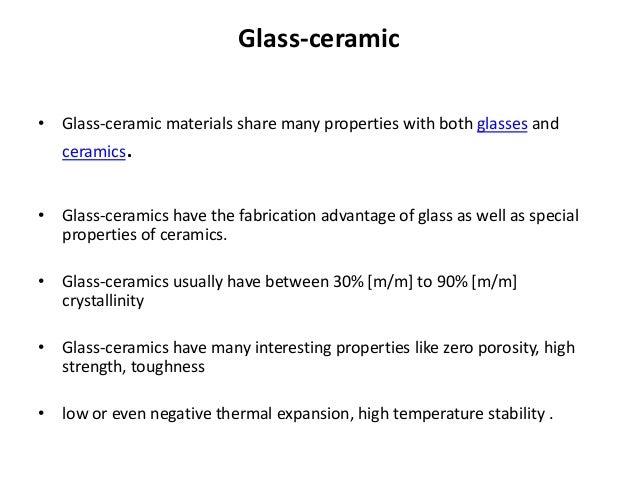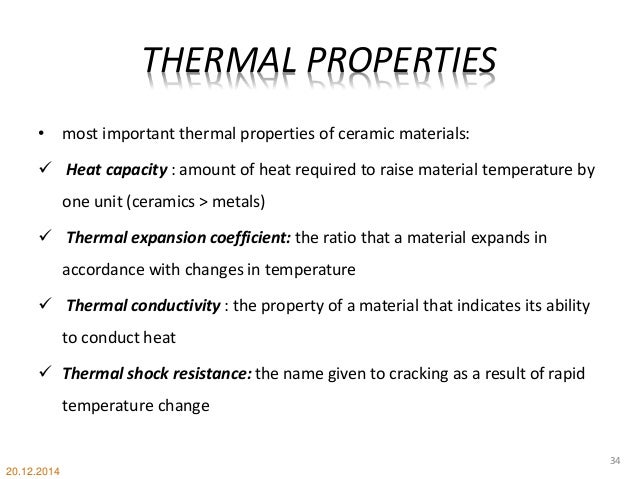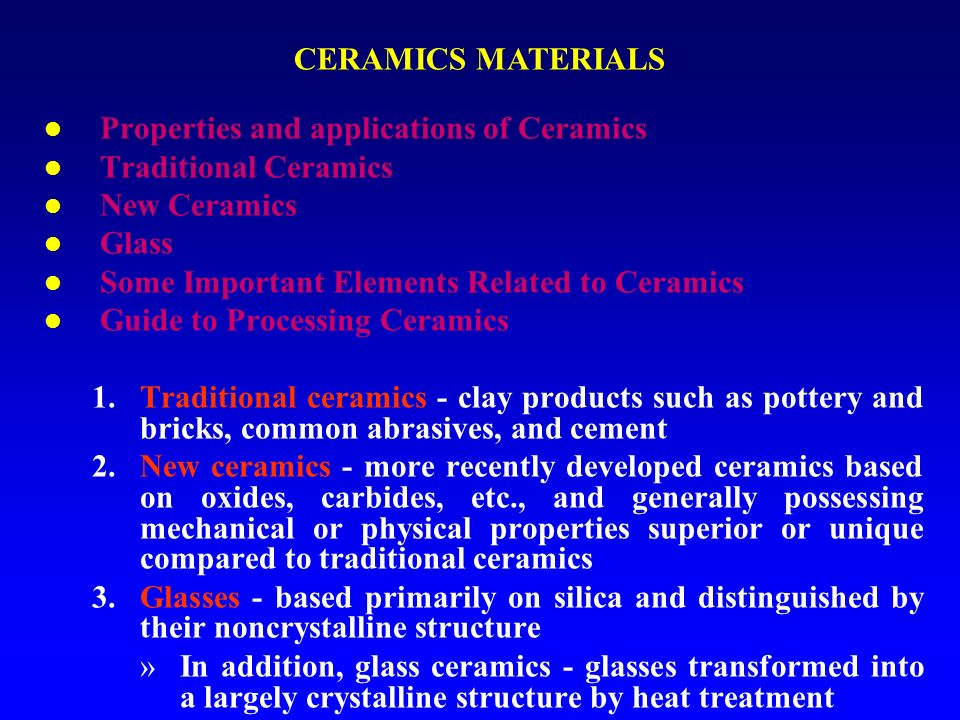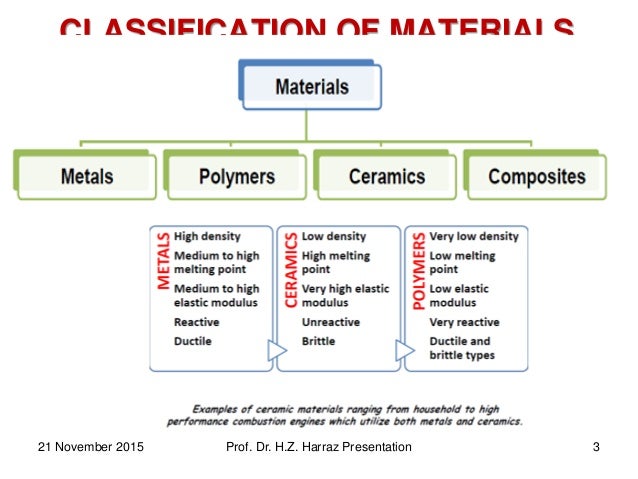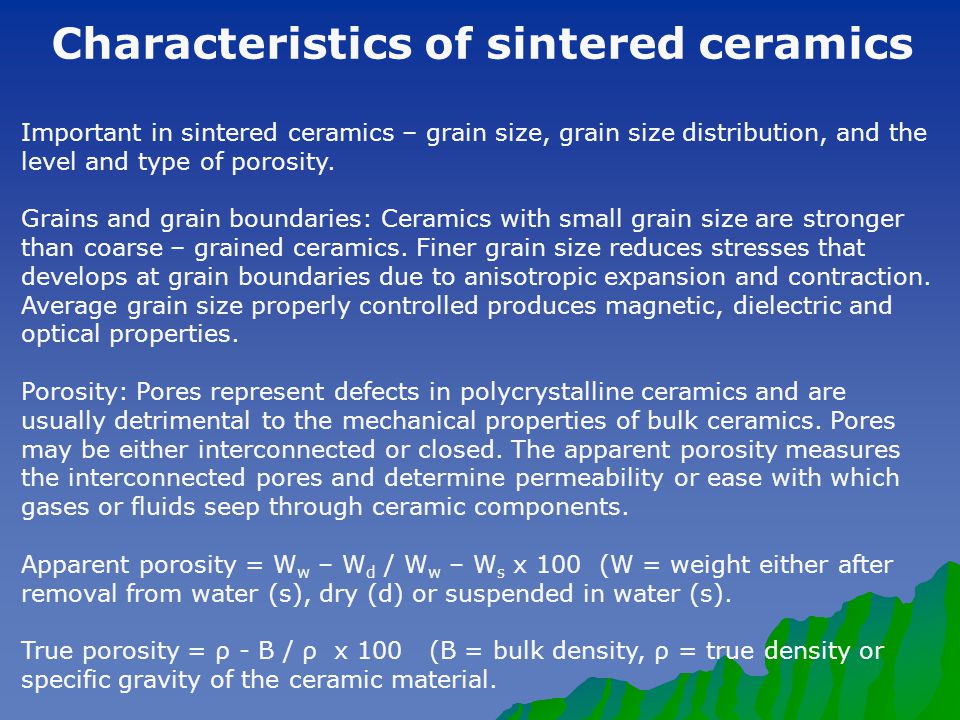These highly desirable properties of ceramics have as yet been largely disregarded due to the perceived low toughness and brittle failure demonstrated by traditional ceramic strength however recent developments have led to a new breed of ceramic materials displaying mechanical properties that were previously considered.
Important properties of ceramic materials.
Crystalline materials have high density than non crystalline materials.
A ceramic material is an inorganic non metallic often crystalline oxide nitride or carbide material.
The properties of ceramic materials like all materials are dictated by the types of atoms present the types of bonding between the atoms and the way the atoms are packed together.
There s quite a big difference between age old general purpose.
What is a ceramic.
Industrial ceramics are commonly understood to be all industrially used materials that are inorganic nonmetallic solids.
Ceramics are compounds of metals and non metals.
These material properties are utilized to produce number of commercial and domestic products such as pottery bricks advanced functional items etc.
These are very important parameters for the ceramic material.
Ceramic composition and properties atomic and molecular nature of ceramic materials and their resulting characteristics and performance in industrial applications.
Advanced ceramics and traditional ceramics are the main categories of ceramic materials.
They withstand chemical erosion that occurs in other materials subjected to acidic or caustic environments.
They have ionic atomic bonding they include insulating materials glass refractories abrasives enamels.
This is known as the atomic scale structure.
Usually they are metal oxides that is compounds of metallic elements and oxygen but many ceramics.
We determine the above all properties with the particle sizes of the material.
Generally ceramic particles are fine and coarse.
The density of ceramics is intermediate between polymers and metals.
Some elements such as carbon or silicon may be considered ceramics ceramic materials are brittle hard strong in compression and weak in shearing and tension.
